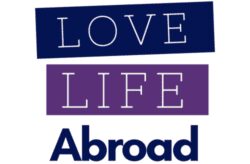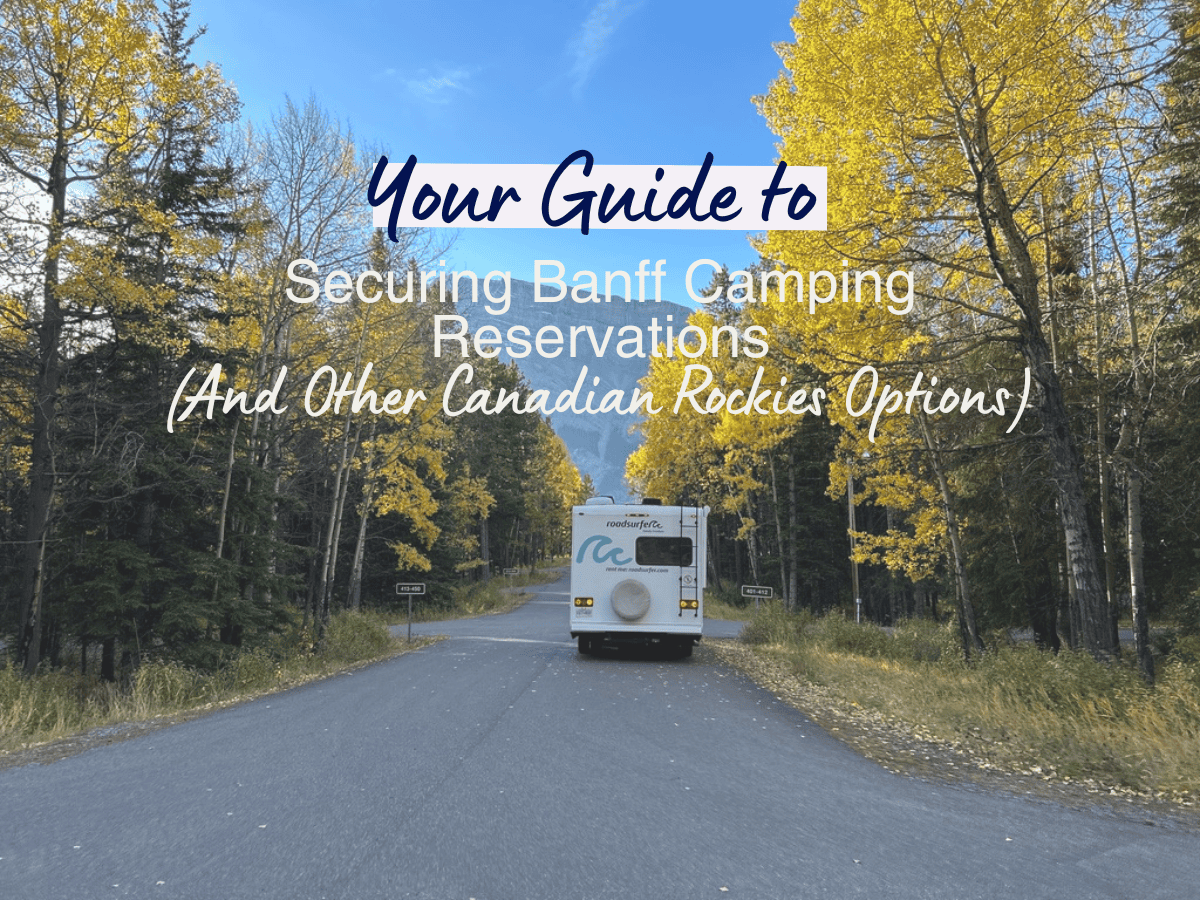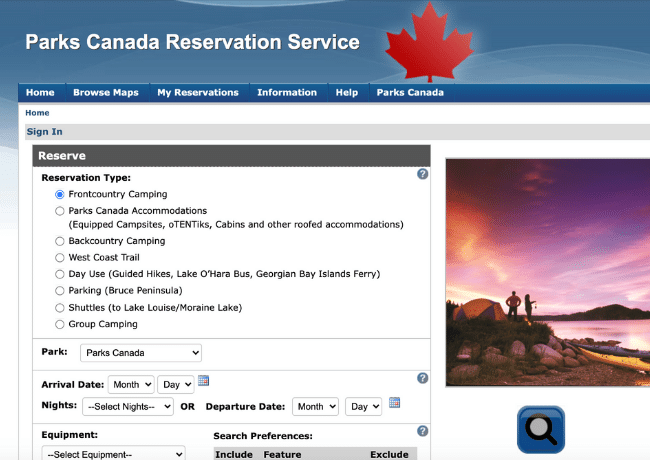Wondering how to secure a Banff camping reservation for your summer road trip to the Canadian Rockies? If you’re planning a camping trip to the stunning Canadian Rockies this year, you’re probably wondering how to score a campsite reservation on Parks Canada in one of the busiest national parks in Canada.
While it may still be freezing where you are, January is when you need to think of your national campground reservations.
National Park camping reservations are getting increasingly popular throughout Canada, so trips to visit National Parks must be planned (even if we are not in a camping mood yet!)
After reading this article, you’ll know:
- When you can reserve campsites in Banff and the Canadian Rockies.
- How to book your camping spots through the Parks Canada reservations system.
- Tips for securing last-minute camping reservations.
- When the camping season starts in Banff.
P.S. If you’re just interested in the list of Parks Canada Camping Reservation Dates for 2025 for the Canadian Rockies, click here.
How to Increase Your Chances Of Scoring Camping Reservations in Banff National Park
Before considering when and how to make a reservation, here is my best tip to help you score a National Park campground reservation.
👉 Browse the booking site before the launch date to familiarise yourself with site navigation. I recommend shortlisting the national park campgrounds you wish to stay at.
Camping spots book up very quickly on the launch date. Pre-browsing will save valuable time and provide backup options if your preferred site is unavailable. Make sure you also set up a booking account before launch day.
Also, look at all your available dates and be ready to change dates if your preferred dates are unavailable.
Reservations for Parks Canada Camping for Visiting Banff and the Canadian Rockies
All campgrounds in Banff National Park (and all other nearby national parks) are operated by Parks Canada, whether for front or back-country camping.
Parks Canada also offers some glamping options with its:
- OTENTik tent
- Ôasis
- MicrOcube
- Yurt
- Cabin
- Tipi
When Can You Reserve National Park Campsites in Canada
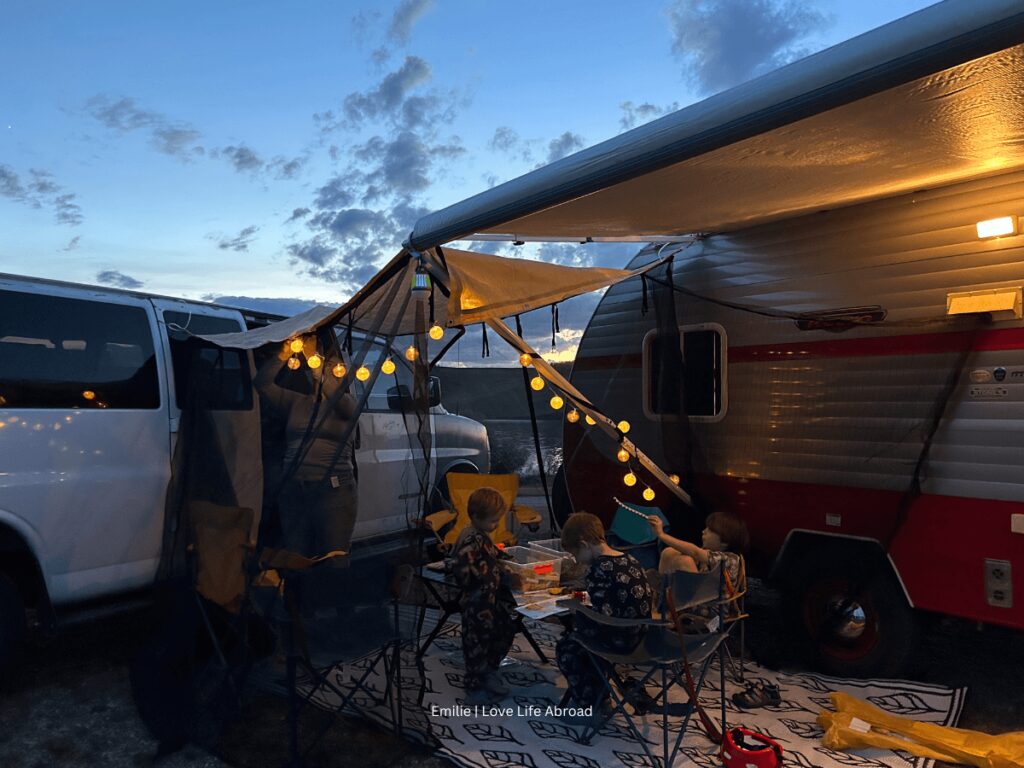
Parks Canada camping reservations need to be arranged months in advance. The global reservations system for all Parks Canada campgrounds generally opens in January and February (depending on the national parks).
From day 1 of the reservation system opening, you can book stays from April 2025 to March 2026.
Here are some of the most popular campground reservation dates for 2025:
Parks Canada Camping Reservation Dates (2025):
- Banff National Park: Friday, January 24, 2025, at 8:00 am MT
- Jasper National Park: Tuesday, January 28, 2025, at 8:00 am MT
- Waterton Lakes National Park: Wednesday, January 22, 2025 at 8:00 am MT
- Kootenay National Park: Tuesday, January 21, 2025, at 8:00 am MT
- Yoho National Park: Tuesday, January 21, 2025, at 8:00 am MT
- Glacier National Park: Friday, January 17, 2025, at 8:00 am PT
- Mount Revelstoke National Park: Friday, January 17, 2025 at 8:00 am PT
Each campsite has a different reservation timetable. To book national park camping, you must check the launch date for each campsite you wish to visit. All campground reservations in the Canadian Rockies open about mid-January in 2025.
▶️ Check out this useful list of national campgrounds in Canada and their launch dates.
How to Make a Parks Canada Camping Reservation
💡 The reservation system from Parks Canada was updated in 2023. If you didn’t make any reservation in 2023, you’ll need to create a new account in the new system. Note that you’ll lose your camping reservation history, so you might want to log it before the campground reservation date to note your preferred campgrounds.
A Few Things to Consider Before Booking Your Campsite
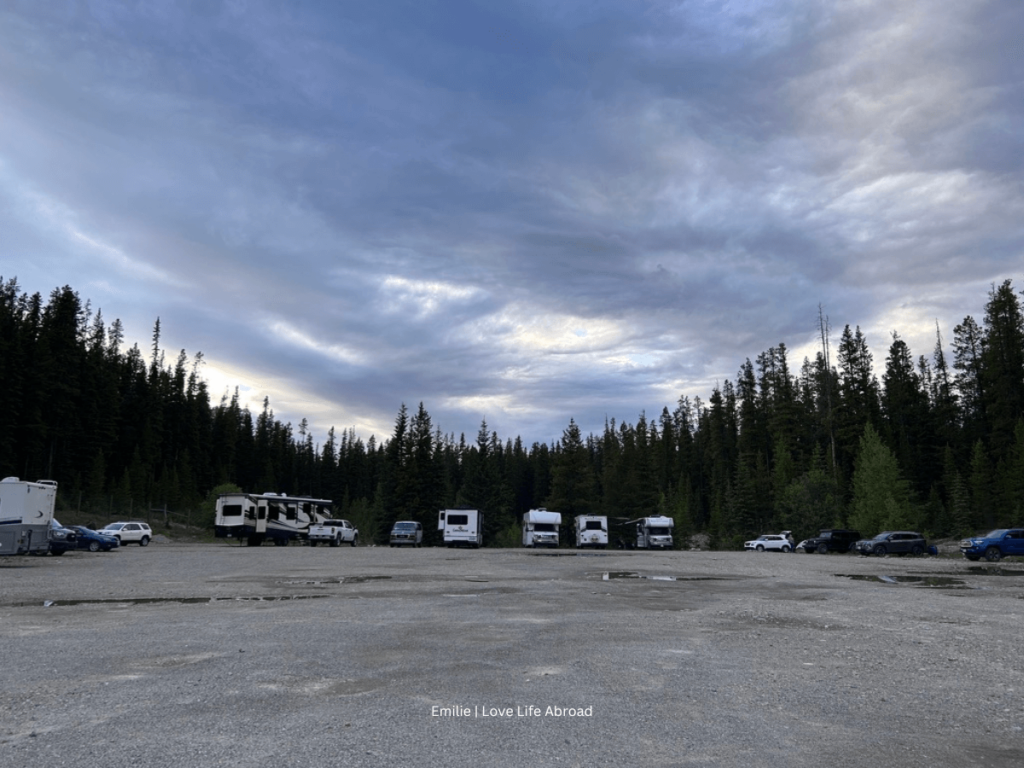
Travel Dates
- Avoid weekends and long weekends; these book up quickly.
- Travel midweek for a better chance of securing a spot, even during peak season.
Campsite Type
- Frontcountry Sites: Accessible by car/RV, with extensive facilities like hot showers, toilets, and electric hookups. Ideal for families and beginners.
- Backcountry Sites: Accessible only by hiking, with basic amenities like fire pits and compostable toilets. Permits may be required.
- Decide if you prefer smaller, quieter sites or larger, more active campgrounds.
Facilities
- Choose campgrounds with activities or playgrounds if traveling with kids.
- Check the number of showers and toilets to avoid long waits.
- Ensure access to electricity for extended stays and WiFi/cellular networks if needed for work.
- Note: Many campgrounds in the Canadian Rockies, especially along the Icefields Parkway, have limited connectivity.
How to Make a Parks Canada Camping Reservation
Campsites in national parks in Canada can only be reserved on the Parks Canada website. Here is your step-by-step guide on how to make a Parks Canada camping reservation:
Prepare in Advance
- Visit the Parks Canada Reservation System to explore campgrounds and familiarize yourself with the site’s layout.
- Create a new account if you haven’t used the system since its 2023 update. You’ll lose any prior camping history, so note past reservations if needed.
- Choose your preferred campgrounds, dates, and backup options. Popular spots like Lake Louise Campground and Tunnel Mountain sell out quickly.
- Verify the campground’s operating and reservable dates.
Set Up Alerts and Timelines
- Mark the reservation opening date for your desired campground on your calendar.
- Be ready at 8:00 a.m. (local time, either Mountain Time or Pacific Time) on launch day—reservations go quickly for the summertime, especially during the weekend!
- Note that the reservation for the shuttles to Moraine Lake and Lake Louise opens later in the year, in April.
Log In and Be Ready Before Launch Time
- Sign in to your Parks Canada account at least 15 minutes before the reservation.
- Have your payment information ready to avoid delays during checkout.
Search for Your Campsite
- Use the search bar to find your desired campground.
- Filter by dates, site type (tent, RV, backcountry), and amenities (electrical hookups, water, etc.).
Select Your Campsite
- Review the campground map to choose an available site. Green indicates availability; red means it’s booked; yellow means it’s partially available.
- Click on your preferred site for details like size, amenities, and rules.
- Add the site to your cart quickly—campsites are not held until you check out.
Complete Your Booking
- Double-check your reservation details, including dates, site type, and campground rules.
- Enter your payment details and confirm your booking.
- Save or print your reservation confirmation as proof of booking. You can modify your booking later, but service fees apply.
You’ll now be ready to start planning your Banff and Canadian Rockies vacation!
💡 You can also make a reservation by phone if you prefer that to online booking, but you’ll still need to set up an account using a Parks Canada login.
🛂 In addition to your camping fees, fire permit, and reservations, you’ll need to purchase a national park pass. Passes cover your entrance and day use at the park and can either be a single park day pass (CA$11 per adult per day) or an annual discovery pass that gives you access to all Parks Canada facilities.
The Parks Canada Discovery Pass is CA$ 75.25 for one adult or CA$ 151.25 for a family pass. Children under 17 years old and older have free access.
Find out all the pricing details on Parks Canada website.
It’s a bit more expensive than the “America The Beautiful” pass to visit the US National Parks (which costs US$ 80 and is valid for one year). However, it’s still worth it if you visit more than one national park (including National Historic Sites) across Canada.
What Are Your Campground Options in the Canadian Rockies
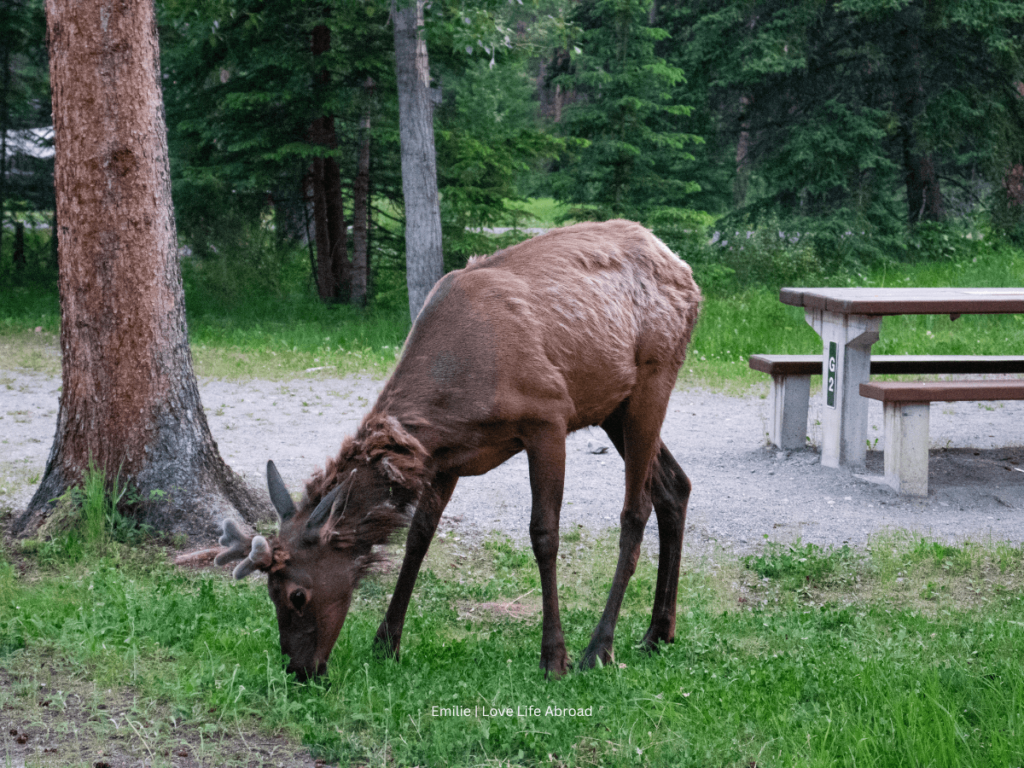
Parks Canada offers excellent camping options, so it’s hard to say which ones are the best. But here are some options for the front-country campgrounds in the Canadian Rockies (that requires reservation).
NOTE: All information found in this table is subject to changes. Please visit Parks Canada website for up-to-date information and for more camping options (they are not all listed below)
| Campground | National Park | Operation Dates | Type |
| Tunnel Mountain – Village I | Banff | May 8 to October 5 | Unserviced |
| Tunnel Mountain – Village II | Banff | Year Round | Electrical |
| Two Jack Main | Banff | June 19 to September 1 | Unserviced + Electrical |
| Johnston Canyon | Banff | May 22 to September 21 | Unserviced |
| Lake Louise Hard-sided | Banff | Year Round | Electrical |
| Lake Louise Soft-sided | Banff | May 30 to September 24 | Unserviced |
| Whistlers | Jasper | May 7 to October 13 | Full service |
| Wapiti | Jasper | June 4 to October 27 (open in the winter as first-come first-serve) | Electric + Unserviced |
| Miette | Jasper | May 14 to September 15 | June 4 to October 27 (open in the winter as first-come-first-serve) |
| Townsite | Waterton Lakes | May 9 through September 10 (open in the winter as first-come-first-serve) | Full service |
| Kicking Horse | Yoho | May 30 to October 5 | Unserviced |
| Snowforest | Mount Revelstoke | May 16 to October 12 | *for hard-sided camping unit only |
| Redstreak | Kootenay | May 1 to October 13 | Full service |
| Marble Canyon | Kootenay | June 19 to September 1 | Unserviced |
| Loop Brook | Glacier | June 27 -October 13 | Unserviced |
How to Get Last-Minute Camping Reservations
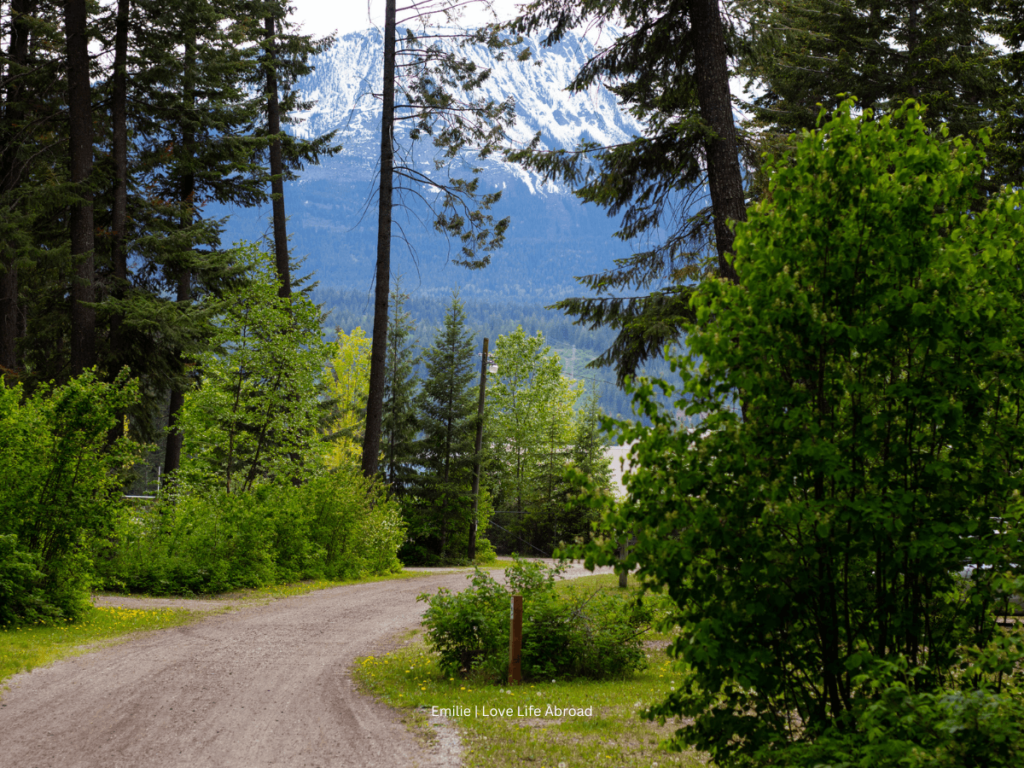
Camping in national parks is the best way to explore and experience everything a national park offers. But as you know, they get booked early in the year.
I don’t know about you, but for our family, it’s hard to plan our camping trips in January, for the summer. Plus, with the weather in Canada, we never know if the weekend we picked will be great for camping (I love camping, but not a fan of a wet camping trip!)
Here are some tips to help you get a last-minute camping reservation.
1. Be Flexible with Your Travel Dates
- Midweek Stays: Most campers book weekends. Arriving on a Tuesday or Wednesday increases your chances of finding an opening.
- Avoid Peak Times: Skip long weekends and holidays if possible. Shoulder seasons (May or September) are less busy and still offer great weather. June and September are my favorite months to visit Banff.
2. Look for Cancellations
- Check Frequently: Campers often cancel reservations. Check the Parks Canada reservation system daily once you get closer to the date you’re looking for. It’s how we were able to camp in Banff last-minute on Canada Day long weekend.
3. Try First-Come, First-Served Sites
- Arrive Early: Many campgrounds have non-reservable sites. Arrive before 9:00 a.m. to claim a spot for the night.
- Ask Park Staff: Park rangers often know which campgrounds have last-minute openings or cancellations.
Here is the list of first-come-first-serve front-country campgrounds in Banff and the Canadian Rockies:
- Waterfowl Lakes in Banff National Park (unserviced)
- Wilcox in Jasper National Park (unserviced)
- Honeymoon Lake in Jasper National Park (unserviced)
- Kerkeslin in Jasper National Park (unserviced)
- Icefields Center in Jasper National Park (unserviced)
- Monarch in Yoho National Park (unserviced)
There are a few other ones in Jasper National Park, but there are only walk-in (not accessible with a vehicle)
4. Expand Your Search Area
- Explore Nearby Parks: If Banff campgrounds are full, try Jasper, Yoho, or Kootenay National Parks.
- Consider Provincial Parks: Alberta and British Columbia have beautiful provincial campgrounds close to the Rockies.
Alternative locations for visiting the Canadian Rockies:
- Instead of staying in Banff, try Canmore in Kananaskis
- Instead of stating in Jasper, try Hinton
- Instead of staying in Yoho National Park, try Golden
- Instead of staying in Mount Revelstoke National Park, try Revelstoke (the Crazy Creek Resort is amazing!)
- Instead of staying in Waterton Lakes National Park, try Pincher Creek.
You won’t be directly within the national park limits, but it’s still a great way to make your trip happen if you can’t find the campgrounds you’re looking for.
Also, you might be able to find some options in Harvest Hosts, outside the national parks.
5. Be Open to Different Types of Sites
- Frontcountry vs. Backcountry: If you can’t find a frontcountry spot (car camping), consider backcountry sites. These require hiking in but often have more availability.
- RV vs. Tent Sites: If you’re tent camping, check for RV sites that allow tents or if you’re traveling with a smaller campervan, you might be able to stay on some tent sites.
6. Check for Glamping Options
Parks Canada Glamping: Some campgrounds offer oTENTik tents, cabins, or yurts, which may still have availability, but they also tend to book out quickly.
Final Thoughts: National Parks Campground Reservation
The Banff camping reservations system opens early in the year (in mid-January), and spots fill fast. Whether you’re looking for frontcountry convenience or a backcountry adventure, planning ahead will ensure you can make the most of your Canadian Rockies getaway.
Where will you be camping this season?
